50+ Sample Affiliate Agreement
-
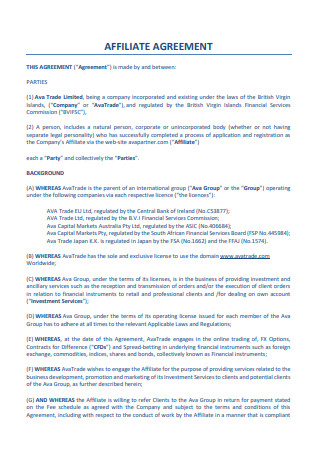
Affiliate Agreement Template
download now -
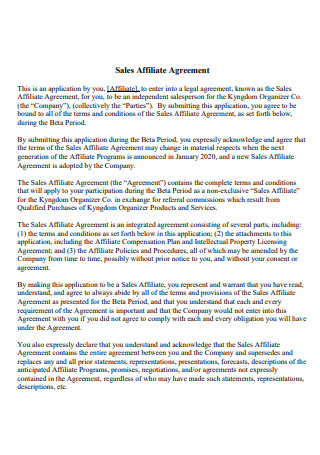
Sales Affiliate Agreement
download now -
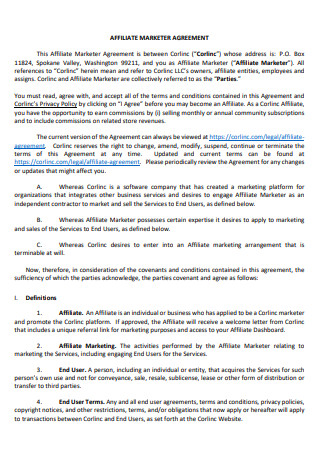
Affiliate Marketer Agreement
download now -

Affiliate Membership Agreement
download now -

Affiliate Program Agreement
download now -

Sample Affiliate Agreement
download now -
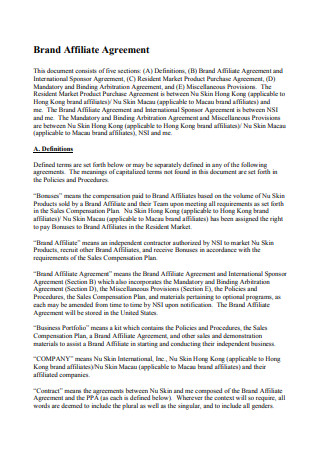
Brand Affiliate Agreement
download now -
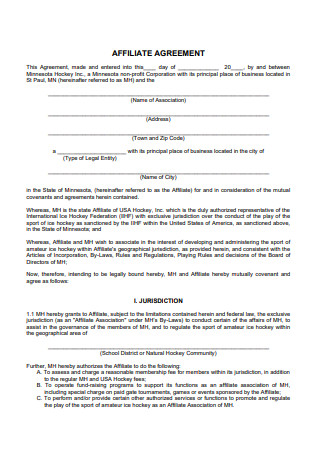
Basic Affiliate Agreement
download now -
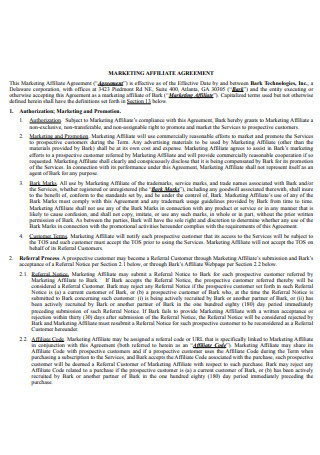
Marketing Affiliate Agreement
download now -
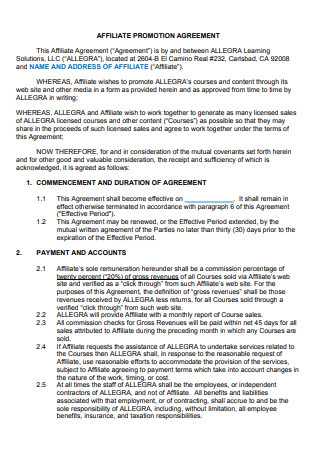
Affiliate Promotion Agreement
download now -
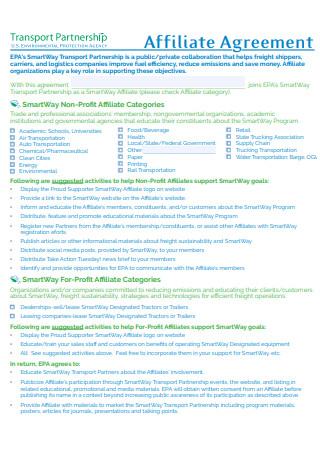
Transport Partnership Affiliate Agreement
download now -
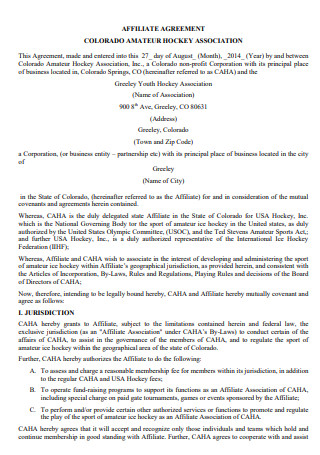
Hockey Association Affiliate Agreement
download now -
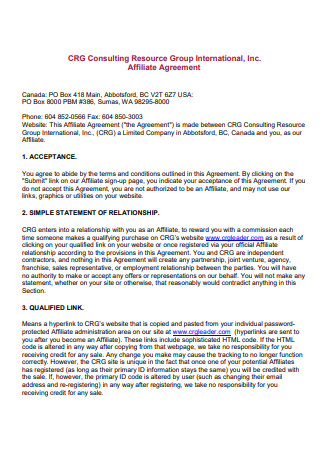
Group International Affiliate Agreement
download now -
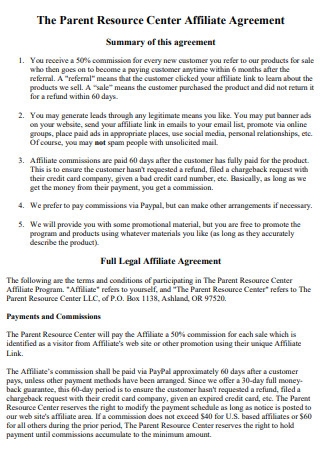
Resource Center Affiliate Agreement
download now -
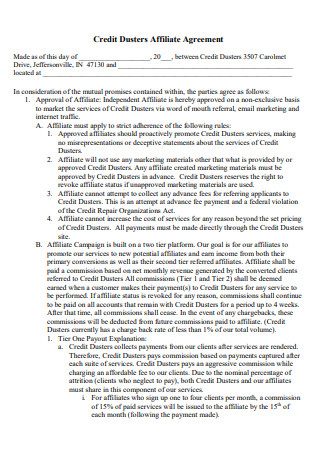
Credit Affiliate Agreement
download now -
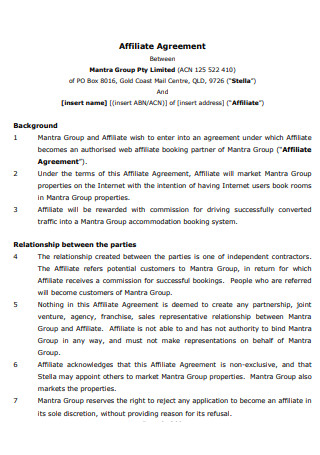
Group Affiliate Agreement
download now -
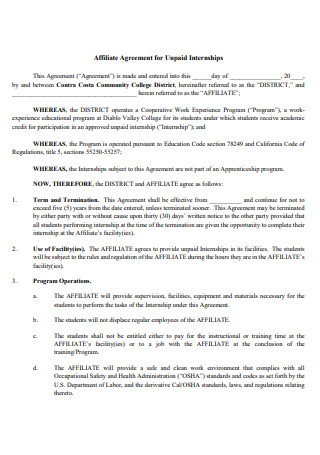
Affiliate Agreement For Unpaid Internships
download now -
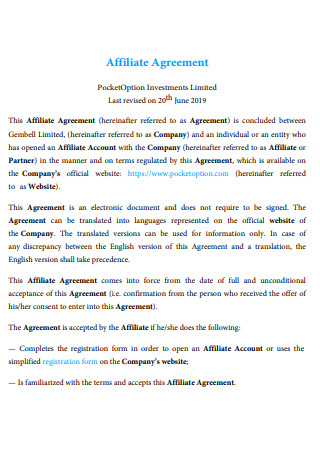
Formal Affiliate Agreement
download now -
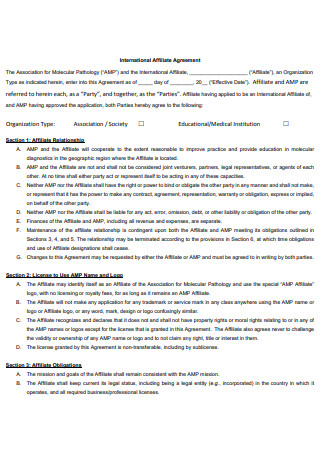
International Affiliate Agreement
download now -
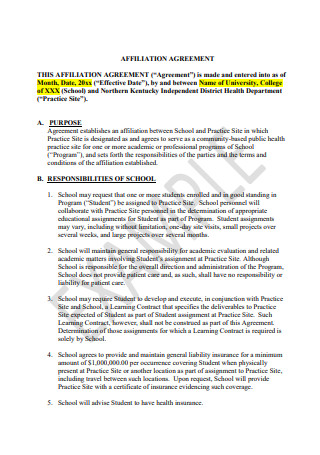
Affiliate Agreement Example
download now -
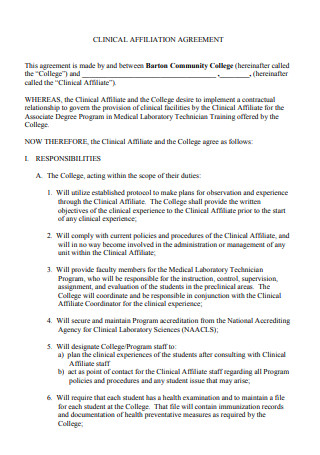
Clincial Affiliate Agreement
download now -
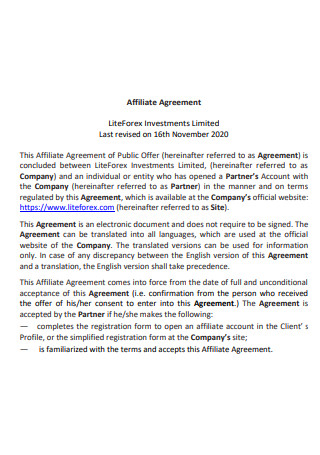
Affiliate Investment Agreement
download now -
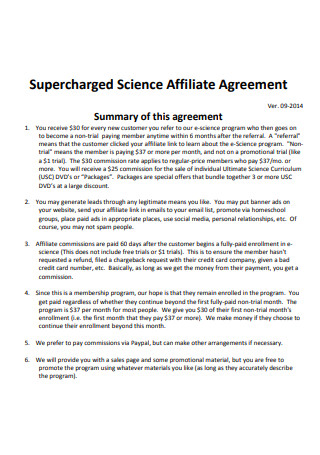
Science Affiliate Agreement
download now -
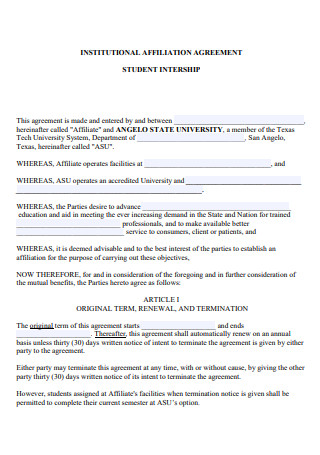
Institutional Affiliate Agreement
download now -

Affiliate Non-Disclosure Agreement
download now -
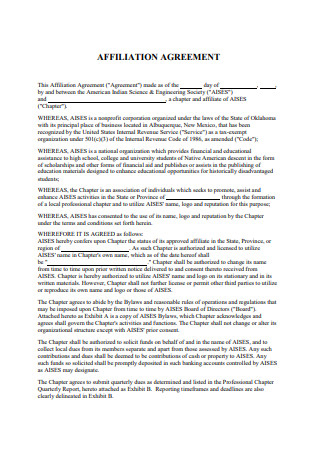
Affiliate Agreement in PDF
download now -
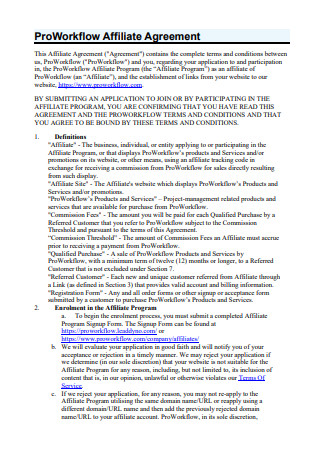
Workflow Affiliate Agreement
download now -
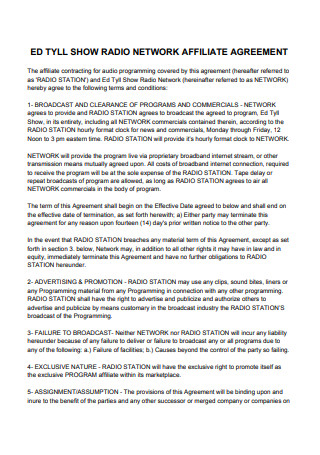
Radio Network Affiliate Agreement
download now -
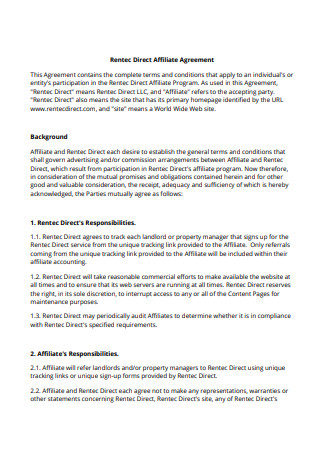
Direct Affiliate Agreement
download now -
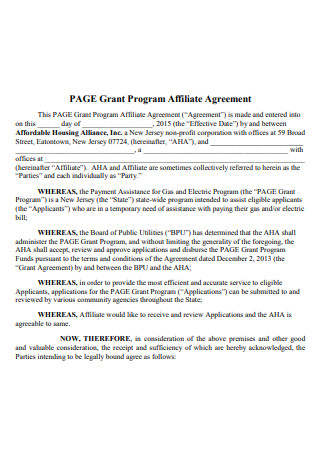
Grant Program Affiliate Agreement
download now -

Affiliate Agreement For Wholesale Accounts
download now -

Non Compensation Affiliate Agreement
download now -
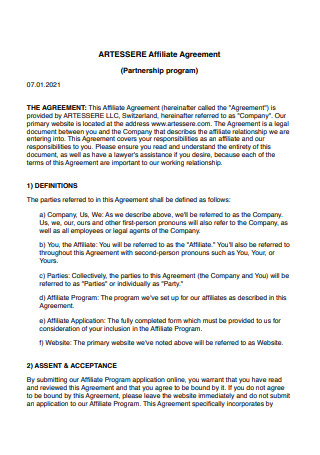
Affiliate Partnership Program Agreement
download now -
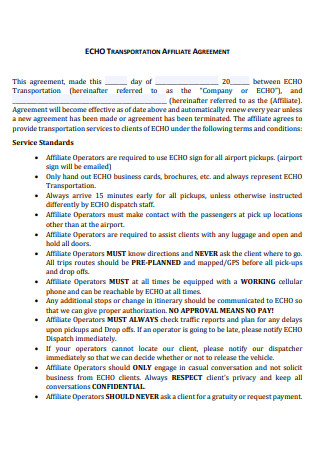
Transportation Affiliate Agreement
download now -
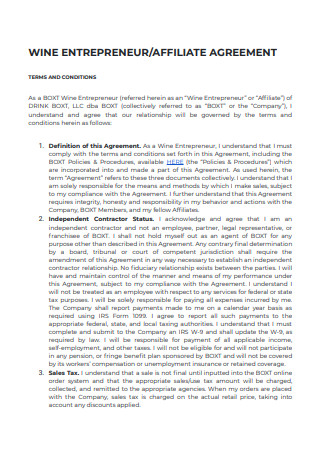
Enterpreneur Affiliate Agreement
download now -
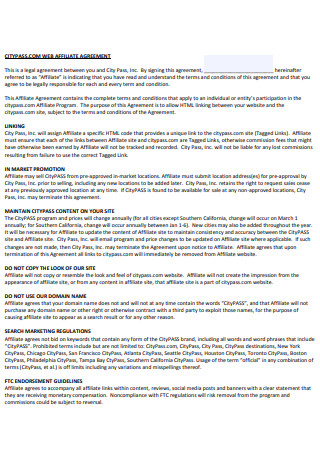
Web Affiliate Agreement
download now -
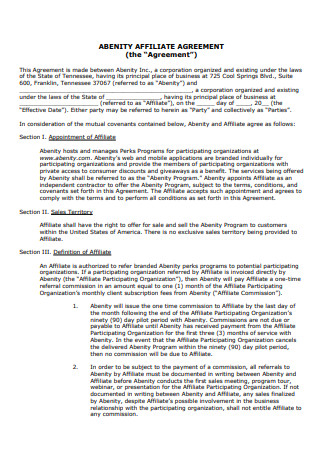
Standard Affiliate Agreement
download now -
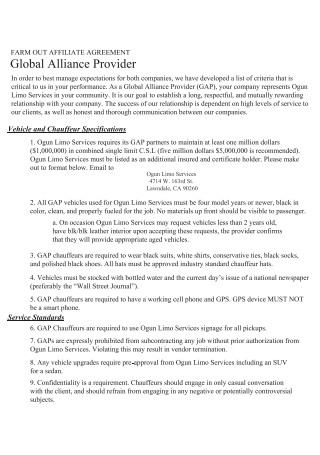
Farm Affiliate Agreement
download now -
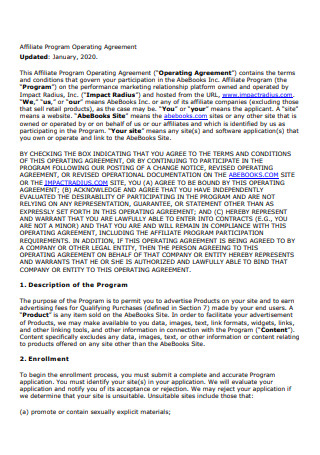
Affiliate Program Operating Agreement
download now -

Online Affiliate Program Agreement
download now -
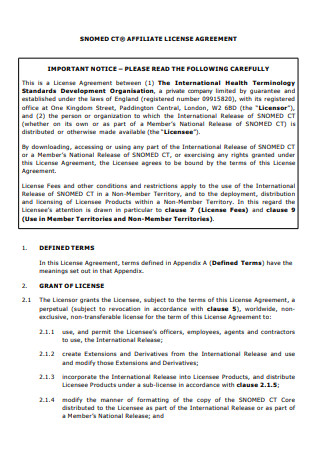
Affiliate License Agreement
download now -
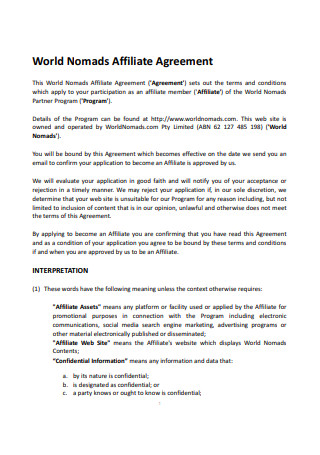
World Affiliate Agreement
download now -
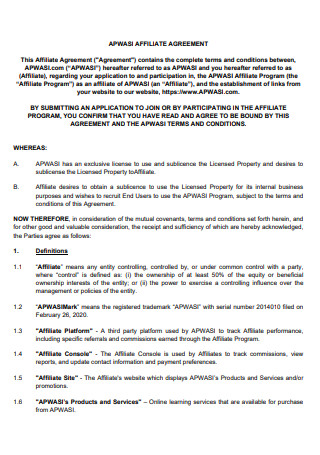
Printable Affiliate Agreement
download now -
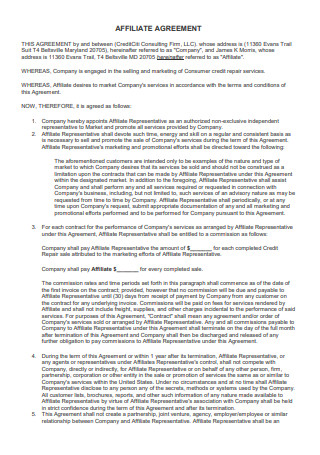
Simple Affiliate Agreement
download now -
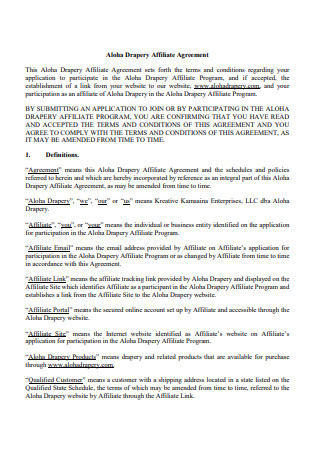
Affiliate Agreement Format
download now -
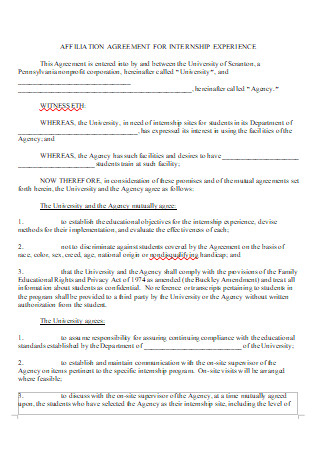
Affiliation Agreement for Internship Experience
download now -
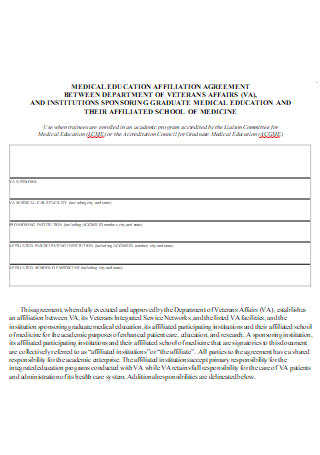
Medical Education Affiliate Agreement
download now -
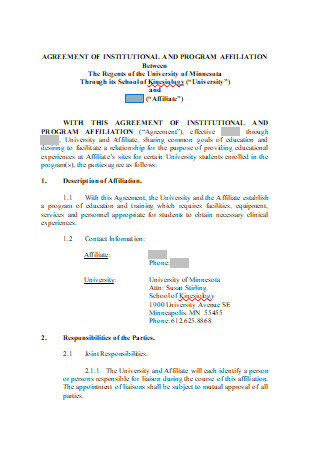
Agreement of Institutional and Program Affiliation
download now -
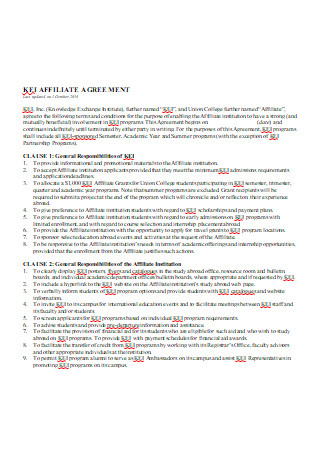
Affiliate Agreement in DOC
download now -

Loan Affiliate Agreement
download now -
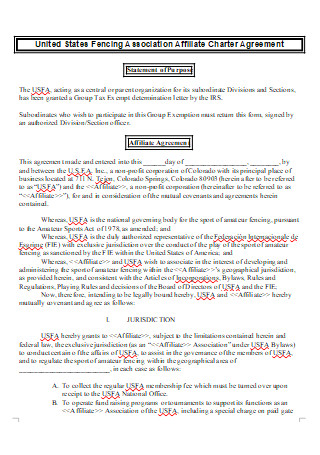
Affiliate Charter Agreement
download now
FREE Affiliate Agreement s to Download
50+ Sample Affiliate Agreement
What Is an Affiliate Agreement?
What Is an Affiliate?
Characteristics of an Agreement
Components of an Affiliate Agreement
How to Create an Affiliate Agreement
FAQs
What Does it Mean to be an Affiliate?
Can an Affiliate Agreement be Terminated Without Cause?
What Is Clause 12 of an Affiliation Agreement?
In a business, there are numerous things that can go wrong. One day, you’re making deals and shaking hands with a business partner or investor, and the next day, you are in court because one of you failed to follow through on a promise. However, there is a disadvantage: because you did not put your agreement in writing, all parties lose and will never recoup what was lost prior to the agreement. Business agreements are affirmations, either oral or written, that two or more parties have agreed on an exchange of promises. Furthermore, an agreement can be explicit or implicit. An agreement is formed when one party makes a direct offer, and the other party anticipates the offer. A contract might be a single promise or a collection of promises. In order for two or more parties to form a legally binding agreement, the parties’ intentions must be unique and similar. There are some terminologies that are specific to one side and others that are common to both. In the corporate world, agreements cover nearly every area of the operation (i.e., employment, marketing, human resource, finance, partnership, acquisition, mergers, etc.). Business entities might profit from agreements as a regulator.
What Is an Affiliate Agreement?
Affiliate agreements are increasingly widespread these days, as many people who prefer to work online can earn a lot of money from affiliate connections, depending on the reach of their websites or social media accounts. Many users on major social media platforms enter into agreements with businesses to advertise their products or services. The affiliate is paid a certain amount or a percentage of the sale or a set amount per click when the company receives clicks or purchases through the affiliate’s unique links. Affiliate marketing and selling are common in online shopping, where one company may partner with another to sell items or services. Affiliates can sell things through the seller’s website. The site is under the seller’s control, and affiliates are paid a commission. “Affiliate marketing” is a term used to describe this type of relationship.
To elaborate more on this, an Affiliate Agreement is a document that establishes a relationship between two parties, the corporation, and the affiliate, in which the affiliate is compensated for specific qualified behaviors. Affiliate agreements on the internet can take one of two forms: affiliate agreements in which the affiliate receives cash for user clicks to the company’s website or affiliate agreements in which the affiliate receives funds for user purchases of the company’s goods or services. There are other agreements that may relate to affiliate agreements such as twitch affiliate agreements, marketing affiliate agreements, and affiliate partnership agreements. Other than this, there is a certain person who does this kind of agreement in the market, which is an affiliate marketer. An affiliate marketer is a social media influencer that promotes products and companies that they like to their followers in exchange for a commission if they buy. Typically, the commission is a percentage of each product purchased. Moreover, by simply gathering submitters’ personal and contact details together with their PayPal account email address, you can follow the referrer and deliver their commissions to their PayPal account after a sale is made, and this is what we call affiliate information.
What Is an Affiliate?
The term “affiliate” is most commonly used to indicate a corporate relationship in which one company holds less than a majority of the stock of the other. Affiliations can also refer to a relationship in which at least two companies are subsidiaries of the same larger parent company. Furthermore, in basic business terms, an affiliate is a corporate firm that is “officially attached” to another. An affiliate can work as an independent contractor. In most cases, an affiliate is not associated with the corporation with which it is affiliated. It is a separate entity, a self-employed contractor. While a corporation may be affiliated with another through ownership, ownership does not imply ultimate control. In the corporate, securities, and capital markets, the term affiliate has numerous definitions. A corporate affiliate is an affiliate, in the first case, is a corporation that is linked to another. The affiliate is often subservient to the other and owns minority ownership in the affiliate (i.e., less than 50%). An affiliate may be owned by a third party in various instances. As a result, the degree of ownership a parent business has in another determines the status of an affiliate.
Characteristics of an Agreement
Characteristics of an agreement mean that the parties to an agreement must agree on the same thing in the same sense, as it was intended, with respect to their corresponding rights and duties, concerning the execution of promises made in the past or future, according to the agreement’s characteristics. Listed below are the characteristics of an agreement:
1. Offer and Acceptance
The offeror is the one who makes the offer, while the offeree is the one who accepts it. This contract can be made in the name of a company, an individual, or a limited liability partnership. When a person makes an offer to another person, he or she communicates his or her willingness to fulfill a responsibility in exchange for a promise, act, or abstain. The offeror or proposer is the individual who expresses his or her willingness or makes the offer, whereas the offeree is the person to whom the offer is made. The offeror’s offer must be explicit, that is, the conditions of the offer must be certain. Furthermore, the offer should be disclosed to the offeree, and it is regarded as complete once the offeree is aware of it. On the other hand, acceptance occurs when the offeree provides his or her assent to the offeror, either explicitly or implicitly, to receive or undertake whatever that is proposed to him or her. Within a reasonable period, it must be communicated to the person who makes the offer in the prescribed manner. It must be unequivocal and unqualified.
2. Consideration
Consideration is the monetary worth that one party gives to another in exchange for a service or product. It’s one of the most crucial components of a contract, and most people won’t sign a contract without it.
3. Capacity to Enter into a Contract
The contract shall be void unless both parties are capable of consenting. The contract’s parties must be at least 18 years old, in good health, not under the influence of drugs or alcohol, and not incarcerated.
4. Terms
A written contract, as previously said, is strongly recommended. You have a physical copy in the event of a breach, and the victim will be safeguarded. The terms and conditions that each party must follow must be included in a basic contract. It should contain information on the services, the money, the dates, the timeframes, and all clauses. In a lease agreement between a tenant and a landlord, for example, the renter pays the landlord a set amount of money over a set period of time in exchange for the landlord providing the tenant with a place to reside.
5. Breach of Contract
This happens when one of the parties fails to fulfill their obligations under the contract. If one of the parties fails to comply with the requirements, the other can claim damages. A judge can give compensation to the injured party if there is enough proof. A written contract makes it much easier to resolve disagreements; if the issue escalates into a lawsuit, the terms of the agreement (and what constitutes a breach) are clearly stated out. If the agreement is only verbal, it becomes a case of one party’s word against another, which is far more difficult to prove in court.
Components of an Affiliate Agreement
The majority of agreements start with an introduction and then move on to sections that address specific practice tasks. This information can be incorporated into each part or presented as a general statement on how the contract will be coordinated or administered. Then, after the requisite signatures, a statement explaining when and how the agreement will expire, as well as how it will be altered and canceled, should be added. Remember that the five practice exercises listed in this handbook are merely suggestions and that other activities can be added as well. Here are some pointers for developing each of these sections:
How to Create an Affiliate Agreement
A corporation wishing to construct a thorough agreement for new affiliates should utilize this document. As previously said, Affiliate Agreements are not negotiated for, therefore simply filling up this template once and publishing it on the company website would be enough. The agreement favors the firm since, in most cases, the company must ensure that all its needs are met. In just a few simple steps, you will be able to create an affiliate agreement in this section.
1. Access Template
Affiliate Agreement Templates are easily accessible; all you have to do is find them and download them. A corporation wanting to construct a comprehensive agreement for new affiliates should use this paper as a starting point.
2. Identify Roles
There are two parties that are directly involved in the Affiliate Agreement. The people to whom it is directly related must be mentioned in the first paragraph. The role of the independent contractor should be addressed first. The independent contractor’s job is to give someone else access to and control over his or her medical records. The independent contractor’s basic information must be mentioned in the agreement’s first blank line. The name must be reported exactly as it appears on the official identification card of the independent contractor. The name of the affiliate who will have access to the covered entity’s medical data is the next item to enter. His or her name must be written on the second blank space after the cover entity in the first paragraph. You must also ensure that the business associate’s name matches that on his or her identification card, such as a driver’s license, passport, or any other government-issued ID card.
3. Review Paperwork
The independent contractor and affiliate should check the affiliate agreement to ensure that there are no errors or misleading information in the agreement. It will go over what each party should expect, how the affiliate should behave, how the Agreement should be used, and other pertinent information. If both parties agree that all written outputs are accurate and that no corrections are visible and implicated, then each must take part in the execution. Following that, both parties should sign the blank spaces labeled “Signature” and “Date,” respectively, with their signatures. The affiliate has been reserved once both signatures have been attached so that the entity accepting the obligations and approvals granted by this form can sign his or her name.
For business owners and their associates, the formation of affiliate agreements can be a crucial step. As well as solidifying existing collaboration arrangements, these agreements can also help organizations find innovative ways to collaborate. However, when these agreements are established and polished through time, a wealth of wisdom and experience will be available to draw from.
FAQs
What Does it Mean to be an Affiliate?
An affiliate is a corporation that is tied to another company in a subordinate function, according to corporate law and taxes. To be affiliated, one of the companies must have authority over the other, or both must be controlled by a third party.
Can an Affiliate Agreement be Terminated Without Cause?
It can be ended at any moment, with or without cause, by either Party. You are only eligible for rewards if you are a current Affiliate. You will be eligible for payouts earned prior to the date of termination if you terminate the Agreement.
What Is Clause 12 of an Affiliation Agreement?
For many years, the mutual indemnification clause has been a typical part of affiliation agreements. It’s included in the most recent revised standard template, which was created with considerable legal and Risk Management input from stakeholders in the health and education sectors.
This article provides an overview of the many forms of affiliates and agreements. Because every business situation is different, seek legal advice when drafting any affiliate agreement. You may not have noticed or added “aha” phrases or phrasing. Check to see what proportion of ownership, if any, the other company has in your business if you’re the affiliate. You may access an affiliate agreement template online and you just must download it.
